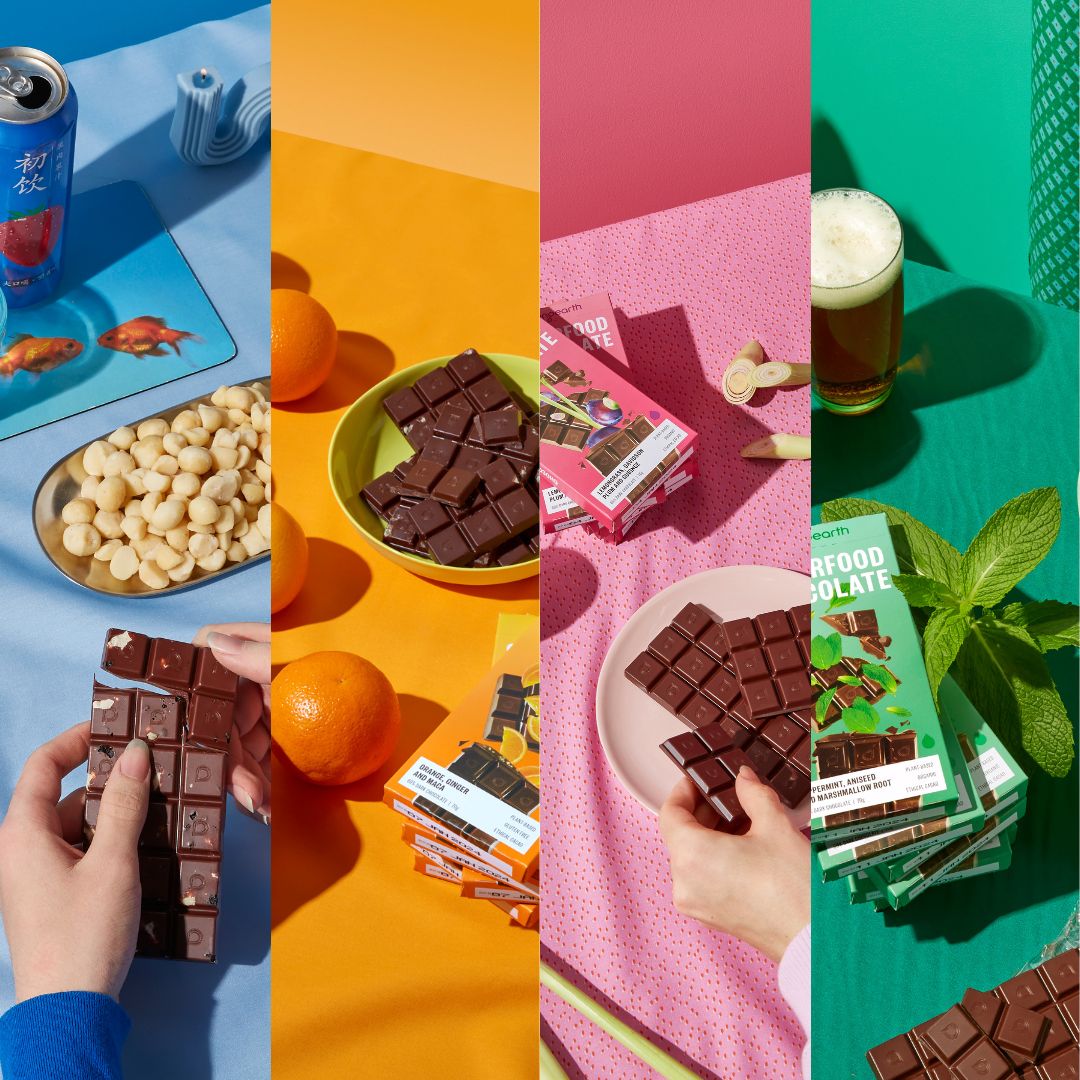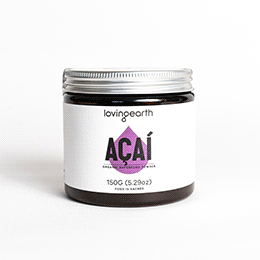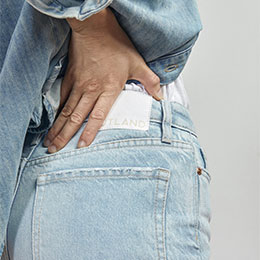
This week we continue our series celebrating the Gubinge Harvest and the release of our two new Nyul Nyul teas. Read on as the weather turns nasty and I get my first taste of Jilungin, before being confronted with some rather difficult considerations.
We hear thunder in the distance as big, dark, grey-blue clouds roll in. The heavens open up and a torrential downpour begins. We return to the small camp and don our raingear to collect wild lemongrass. It’s got a delicious gingery flavor, similar to that of regular lemongrass yet sweeter and milder. The rain continues as I sit and chat with Bruno. This year’s wet season has been long and extreme, causing difficulties with the harvest. The cyclones have blown much of the fruit from the trees, making it difficult to meet quotas. As we make tea, Bruno tells me about his plans for developing the ecotourism project at Twin Lakes. He’s discussed the possibilities with Adam Haddow of SJB Architects, looking over proposals for shed designs that fold out to provide bunks for up to 20 people. The idea is that interested parties can come out onto the land and learn about cultivating food with the revival of traditional land management techniques. The Nyul Nyul have purchased the equipment to install proper toilet facilities but now need more help from government initiatives, which unfortunately seem to have little interest in the area other than for mining. When the rain clears up we go for a walk down to the old quarry, weeding out speargrass and snacking on fresh gubinge. It’s staggering how much constant everyday work is necessary to properly take care of the land, but although it’s labour intensive the results are clear to see. Afterwards we return to the camp and cook up a great dinner of pumpkin, mushroom, local Kimberley beef and salad. We chat and drink Jilungin tea, becoming relaxed and talkative. The rain clears up and it’s a gorgeous night, the sky clear as shooting stars glide across the bright horizon. When it’s time for bed I sleep on the roof of the hut. I wake a few hours later and move my swag in under the roofed area - a lucky move, as sometime later it begins to pour again.
When I wake the next morning it’s still raining heavily. I go to visit Bruno, who’d seemed a bit down the night before. He slept at the other camp and reckons that perhaps we won’t be able to do anything today because of the rain. We might not even be able to drive out of the bush back to Broome if the rain keeps up, as this is a remote area and the roads are little more than dirt tracks. When the weather is this bad, hollows become filled with water to a level even beyond the capabilities of a 4WD jeep. As we sit and talk, Bruno’s anger and disgust with the Australian government’s treatment of Aboriginal people comes to the surface. It’s disconcerting to see him so furious, a strong contrast with his gentle disposition, though his rage and sense of betrayal are quite understandable. After 14 years of trying really hard to get this project off the ground, at 62 years of age he’s getting really tired. A couple of years ago his son was killed on the roads out here in a tragic accident. With the rest of Bruno’s kids living in Alice Springs, this was the only son who was learning the old ways from Bruno. Marion & Lahea tell me that his outlook on things has changed quite a bit since then. Yet his behaviour is really at odds with his anger: positive and proactive. After some time Bruno becomes despondent and sad and doesn’t want to talk any more, so I take my leave and go back to the other camp.

I’m about to go out picking wild lemongrass with Marion & Lahea when Bruno comes along asking if I’d like to go visit some other sites around the area. The rain has eased off, meaning that it’s worth taking some trips around. He’s in a hurry to leave, knowing that Aydan will be disappointed if he doesn’t bring him. It transpires that the trip wouldn’t perhaps have been suitable for the young lad. I feel he wants to tell me something, but doesn’t quite know how to begin the conversation. We drive out to Bindurrk, an abandoned area at which Bruno’s sister previously lived, part of the Dann family land station. A lot of the buildings have now fallen into disrepair, though Loongabid (where we go next to visit some other relatives of Bruno’s) is in good nick. Bruno’s mood picks up and he’s in better form as we drive on. I notice how well he responds to being listened to. He tells me awful stories of how he grew up in the Beagle Bay Mission. The tales are horrific and he’s understandably furious about the lurid attention given by the media to child abuse in Aboriginal communities while so little has been said about what happened in the orphanages. Bruno was taken away from his mum, who died when he was just five. The nuns wouldn’t let him go to her funeral. He tells of how the kids lived in such terror of the clergy that some of them would wet themselves as soon as the nuns and priests entered the room. They didn’t know what they’d done wrong or why they were being punished.
It’s a half hour drive to the old Beagle Bay Mission. We arrive and I’m surprised to find quite a large community in new prefab houses. We stop and chat with various folks, such as Veronica, who I later find out is Bruno’s sister. She’s a lovely old lady who tells me about an Irish nun at the Mission called Sister Bernadette, one of the few clergy who stayed on until she passed away three years previous at the ripe old age of 82 and who Veronica has great regard for. There’s an odd aura around the place, an atmosphere of loneliness and tension. Beagle Bay is now a community for those of the Stolen Generation, people from all over Australia who’ve been relocated here in an attempt to make up for the wrongdoings of the past. It seems to me as if they’ve been left out here and forgotten. The only activity seems to happen around the convenience store and the garage; otherwise a threadbare sense of desolation surrounds. We meet Gerri, a heavyset man in his late ‘30s wearing stained clothes and carrying a breadknife. I maintain a relaxed attitude - Bruno seems entirely comfortable around him, though it’s an odd encounter. He climbs into the van and drives around with us for a while. Bruno’s wanted to bring me to the old church where he used to be an altar boy. He’s keen for me to see the place, though he seems to be avoiding going there as we do the rounds, checking in with the various families and households who take part in the harvest to see how they’re doing. It’s patchy; some have gotten a good haul of gubinge whereas others haven’t done so well. We eventually go down to the church and take a walk around. Again, there’s a very strange aura here. Bruno’s able to recite long passages in Latin; remnants from his days as an altar boy. The church is abandoned but for a single scrappy old dog which Bruno chases out. Nevertheless, it remains in very good repair, obviously taken care of by someone, though only two or three attend mass on Sundays. Bruno is partly bewildered, partly incensed that the only priests remaining on the peninsula hail from Brasil or Africa; they can’t speak English or any Aboriginal language, so communication is difficult. We leave and as we drive back Bruno veers between rage & apathy. His attitude is one of grief, confusion, anger, helplessness. He’s worked so hard and it seems at times that it’s all just inevitably failing. His dark mood prevails, jet black in its pure ferocity. I’m at a loss as to what can be done, entirely unequipped to imagine any solution.


